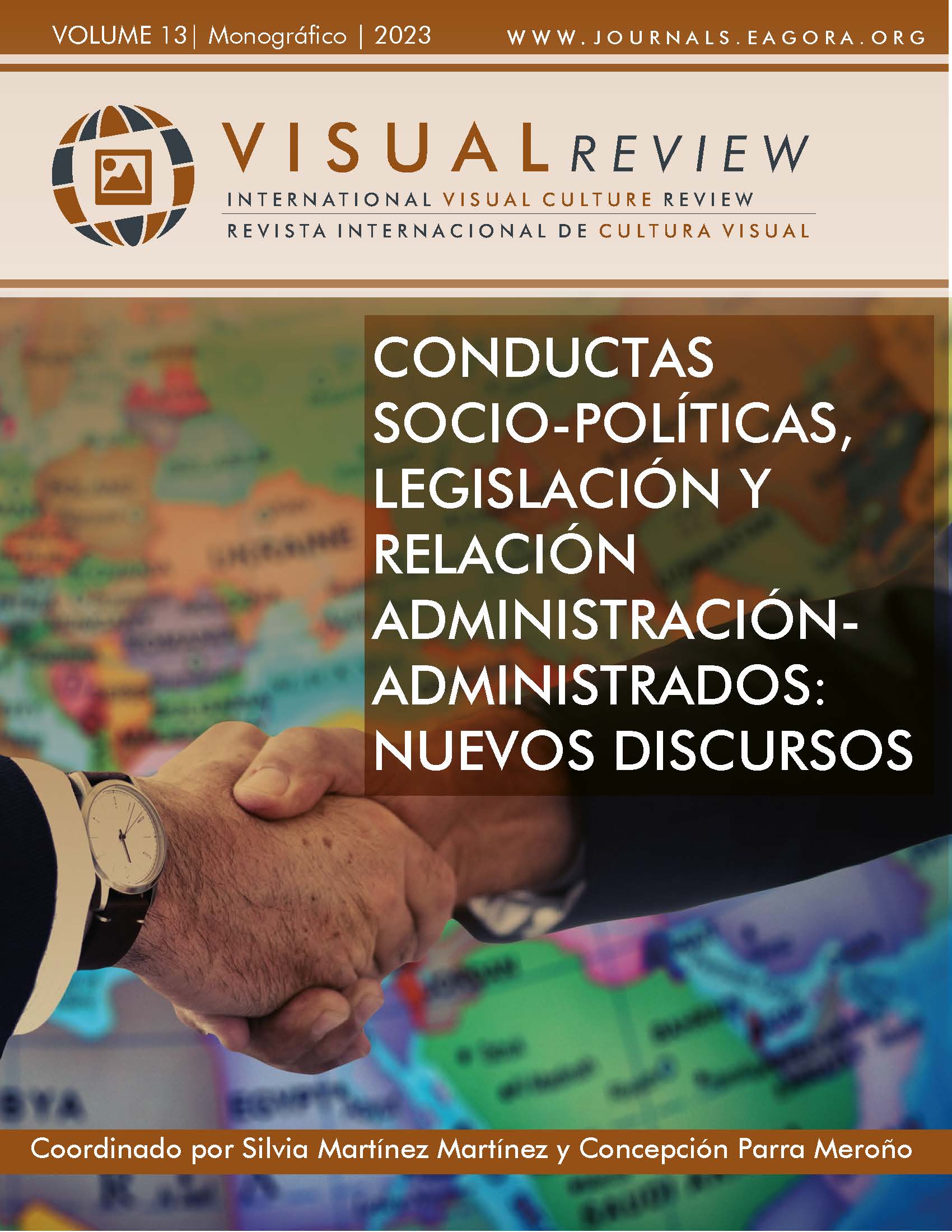Paridad de género versus equidad en el siglo XXI
La crisis de las sociedades modernas
DOI:
https://doi.org/10.37467/revvisual.v10.4556Palabras clave:
Género, Sociedad, Crisis, Paridad, EquidadResumen
La posición de las mujeres en la actualidad, es un tema recurrente y diferenciador. Uno de los pilares de renovación democrática y de la legitimidad del derecho democrático, considera la paridad de género.
Sin embargo, teóricamente socava la clave fundamental de la democracia: el principio de igualdad. Éste por ser el primer y último eslabón arquitectónico de cualquier estructura democrática, requiere de una serie de instrumentos y otros principios establecidos – como la libertad - para tornarse en el principio de Equidad.
Mostramos cómo la equidad introduce un conjunto de medidas reparadoras que contribuyen a la realización de una sociedad más justa.
Descargas
Estadísticas globales ℹ️
|
431
Visualizaciones
|
297
Descargas
|
|
728
Total
|
|
Citas
Achin, C. L. (2006). Femmes et militarism. En C. L. Achin, Femmes in Politique (Vol. Repères, págs. 32-59). Paris, Francia: La Découverte. Recuperado el 21 de 02 de 2022, de https://www.cairn.info/femmes-en-politique--9782707147417-page-32.htm DOI: https://doi.org/10.3917/dec.achin.2006.01
Benvenisti, E. &. (01 de 01 de 2017). Embracing the tenssion between national and international human rights: the case for discordant parityEmbracing the tension between national and international human rights law: The case for discordant parity. International Jourrnal of Constitutional Law, 15(1), 36-59. doi:https://doi.org/10.1093/icon/mox002 DOI: https://doi.org/10.1093/icon/mox002
Elomäki, A. (20 de 06 de 2021). ‘It’s a total no-no’: The strategic silence about gender in the European Parliament’s economic governance policies. International Political Science Review, 00 (0), 15. doi:https://doi.org/10.1177/0192512120978329 DOI: https://doi.org/10.1177/0192512120978329
Fredman, S. &. (2015). Gender equality and human rights. UN Women. UN Women flagship report. Recuperado el 12 de 04 de 2022, de unwomen.org: https://www.unwomen.org/sites/default/files/Headquarters/Attachments/Sections/Library/Publications/2015/Goldblatt-Fin.pdf DOI: https://doi.org/10.18356/e50499ba-en
Henrion, R. (2001). Les femmes victimes de violences conjugales: le rôle des professionnels de santé. Paris: La documentation française. Recuperado el 23 de 04 de 2022, de https://www.vie-publique.fr/rapport/24751-les-femmes-victimes-de-violences-conjugales-le-role-des-professionnels
Kiejman, L. R. (1985). Le féminisme sous la troisième république: 1870-1914. Matériaux pour l´histoire de notre temps, Histoire des femmes et du féminisme, 8-11. Recuperado el 12 de 03 de 2022, de https://www.persee.fr/doc/mat_0769-3206_1985_num_1_1_403977 DOI: https://doi.org/10.3406/mat.1985.403977
Lépinard, É. (2018). The French Parity Reform: The Never-Ending Quets for A New Gender Principle. En E. R.-M.Lépinard, & C. U. Press (Ed.), Transfomrer Gender Cityzenship. The Irresistible Rise of Gener Quotasin Europe (págs. 62-93). Cambridge, Massachussetts, USA: Cambridges Studies in Law and Society.doi:https://doi.org/10.1017/9781108636797 DOI: https://doi.org/10.1017/9781108636797.003
Mathieu, B. V. (2016). Jurisprudence Constitutionnelle, France. Reue europeenne de droit public, 28(2), 713-742.
Meyer, M. K. (1999). Gender politics in global governance. (M. K. Meyer, Ed.) New York: Oxforf: Rowman & Littlefield Publishers.
Mishkin, F. (1984). At real interesest rates equal across countries? An empiricl investigation of international parity conditions. The journal of Finance, 39(5), 1345-1357. DOI: https://doi.org/10.1111/j.1540-6261.1984.tb04911.x
Riot-Sarcey, M. (2008). Histoire du féminisme (Vol. Repéres). La Découverte. DOI: https://doi.org/10.3917/dec.sarce.2008.01
Rodríguez, R. B.-M. (2008). The gender of representation: on democracy, equality, and parity. International Journal of Constitutional Law, 6((2)), 287-316. doi: https://doi.org/10.1093/icon/mon007 DOI: https://doi.org/10.1093/icon/mon007
Zafar, M. V. (2017). From Parity to Preferences-based Notions of Fairness in Classification. 31st Conference on Neural Information Processing System (NIPS) (págs. 1-11). Long Beach, CA, USA: s/e. doi:https://doi.org/10.48550/arXiv.1707.00010
Descargas
Publicado
Cómo citar
Número
Sección
Licencia
Los autores/as que publiquen en esta revista aceptan las siguientes condiciones:
- Los autores/as conservan los derechos de autor.
- Los autores/as ceden a la revista el derecho de la primera publicación. La revista también posee los derechos de edición.
- Todos los contenidos publicados se regulan mediante una Licencia Atribución/Reconocimiento-SinDerivados 4.0 Internacional. Acceda a la versión informativa y texto legal de la licencia. En virtud de ello, se permite a terceros utilizar lo publicado siempre que mencionen la autoría del trabajo y a la primera publicación en esta revista. Si transforma el material, no podrá distribuir el trabajo modificado.
- Los autores/as pueden realizar otros acuerdos contractuales independientes y adicionales para la distribución no exclusiva de la versión del artículo publicado en esta revista (p. ej., incluirlo en un repositorio institucional o publicarlo en un libro) siempre que indiquen claramente que el trabajo se publicó por primera vez en esta revista.
- Se permite y recomienda a los autores/as a publicar su trabajo en Internet (por ejemplo en páginas institucionales o personales), una vez publicado en la revista y citando a la misma ya que puede conducir a intercambios productivos y a una mayor y más rápida difusión del trabajo publicado (vea The Effect of Open Access).













